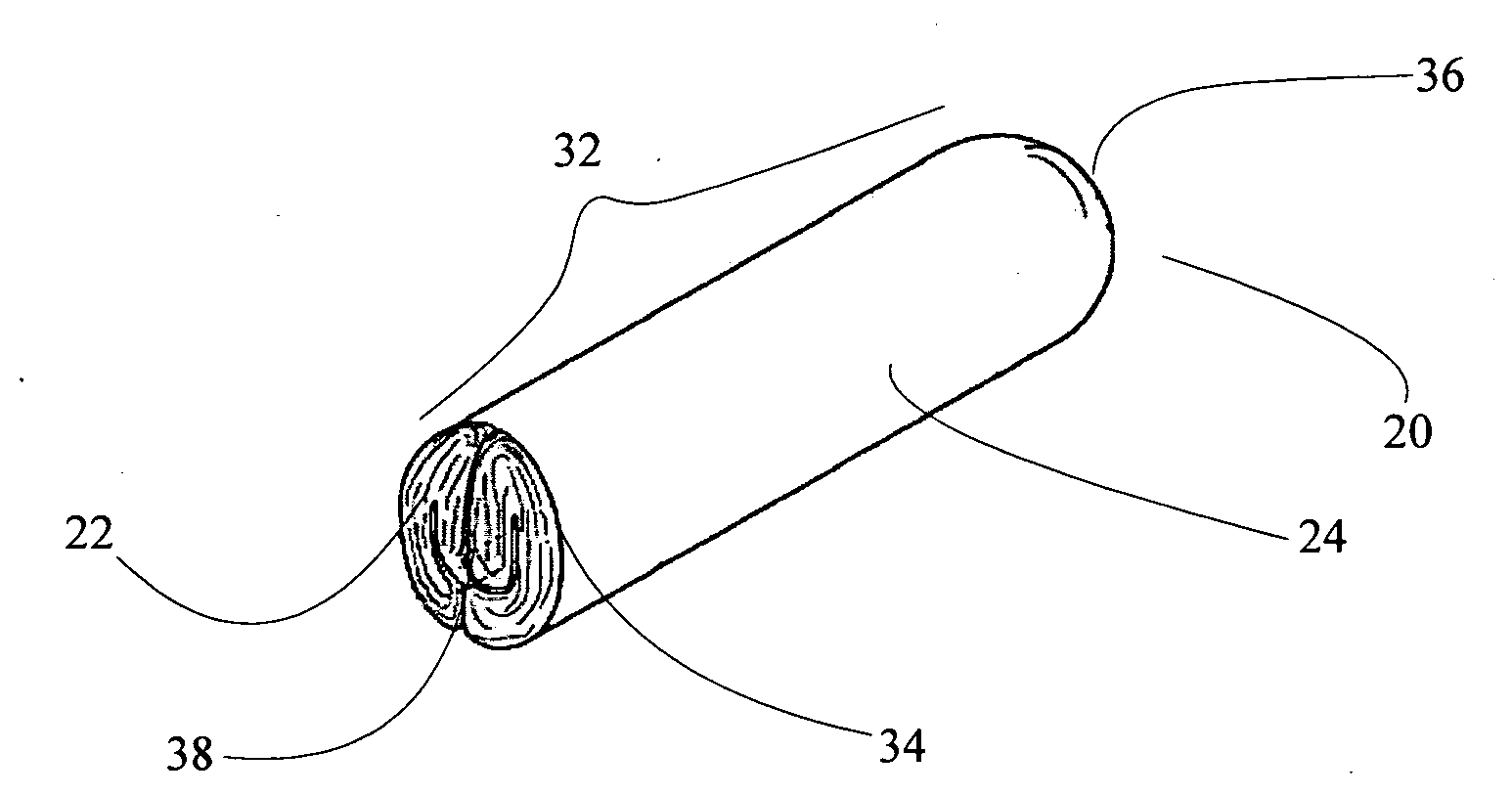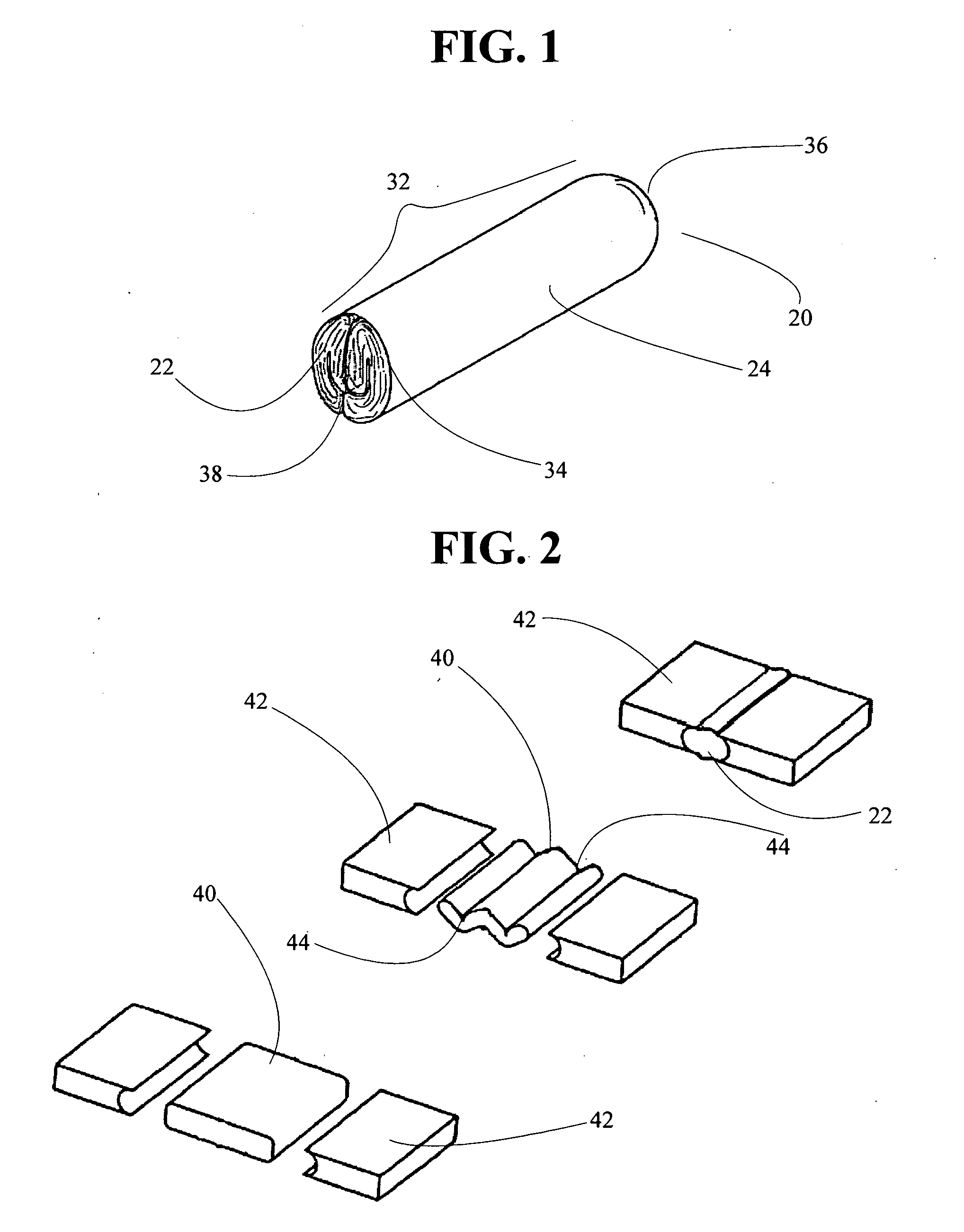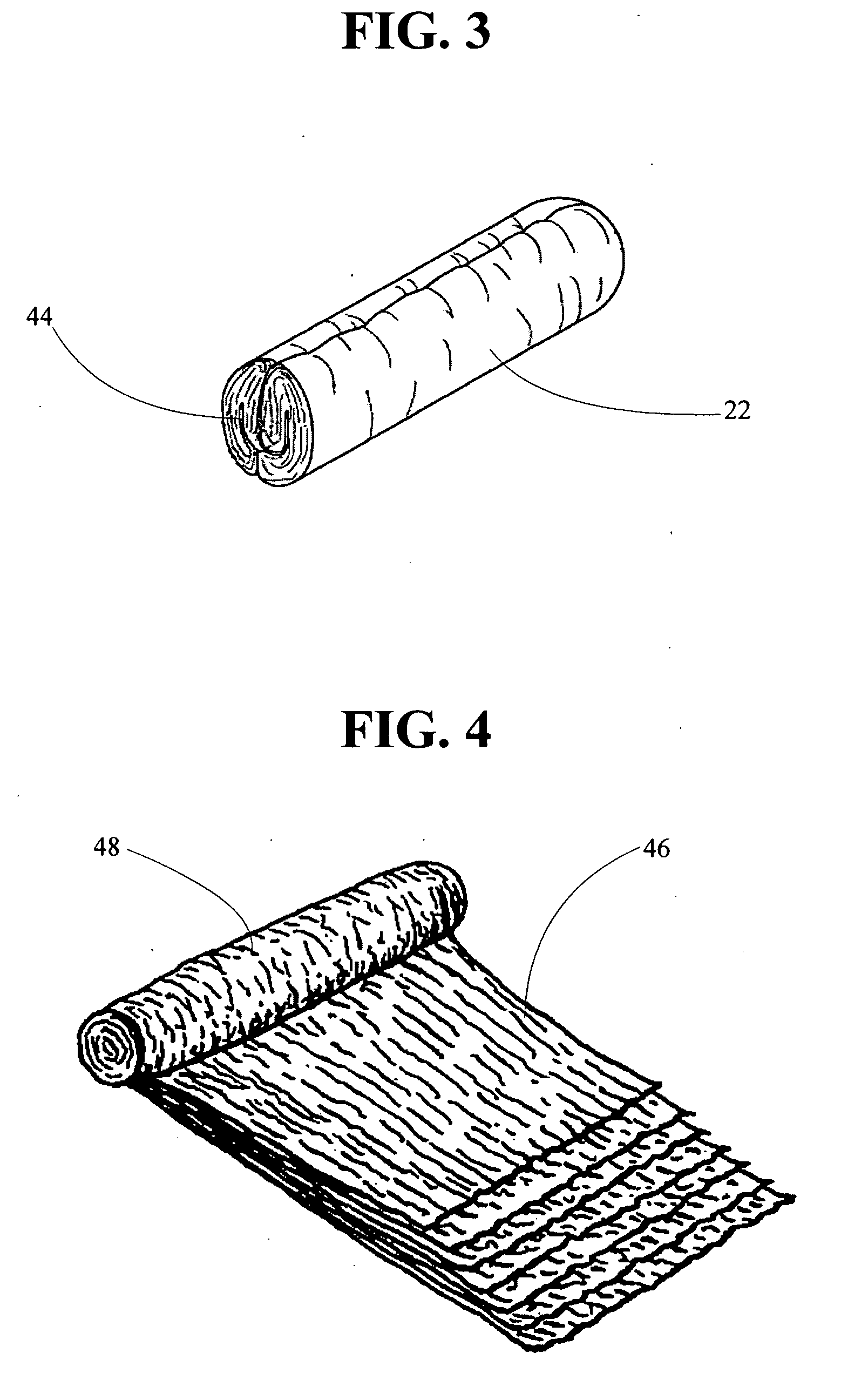Soft bite block and method for making soft bite block
a technology of soft bite and blockage method, which is applied in the field of patient airway blockage, can solve the problems of airway obstruction, dangerously low oxygen in the blood of the patient, and the use of an lma or an ett in anesthetized patients, and achieve the effect of less tooth damag
- Summary
- Abstract
- Description
- Claims
- Application Information
AI Technical Summary
Benefits of technology
Problems solved by technology
Method used
Image
Examples
Embodiment Construction
[0036]The present invention and the various features and advantageous details thereof are explained more fully with reference to the non-limiting embodiments described in the following description.
[0037]FIGS. 1 through 10 show a device of the present invention which provides a disposable, absorbent and soft bite block 20, preferably for use with laryngeal mask airways (LMAs) or oral endotracheal tubes. Furthermore, the soft bite block 20 is contained within an aseptic or sterile package 28 for the protection of the patient 30.
[0038]I. Bite Block of the Present Invention
[0039]Referring to FIG. 1, the soft bite block 20 has an axial length 32, a circumference 34 and a first end 36 with an opposed second end 38. The bite block 20 may be any suitable size and thickness which is suitable for insertion in the patient's 30 mouth. The soft bite block 20 is comprised of an inner core 22 comprising a compressed absorbent material, an outer cover 24 comprising at least one layer of material, a...
PUM
| Property | Measurement | Unit |
|---|---|---|
| soft bite | aaaaa | aaaaa |
| cylindrical mass | aaaaa | aaaaa |
| perimeter | aaaaa | aaaaa |
Abstract
Description
Claims
Application Information
 Login to View More
Login to View More - R&D Engineer
- R&D Manager
- IP Professional
- Industry Leading Data Capabilities
- Powerful AI technology
- Patent DNA Extraction
Browse by: Latest US Patents, China's latest patents, Technical Efficacy Thesaurus, Application Domain, Technology Topic, Popular Technical Reports.
© 2024 PatSnap. All rights reserved.Legal|Privacy policy|Modern Slavery Act Transparency Statement|Sitemap|About US| Contact US: help@patsnap.com










